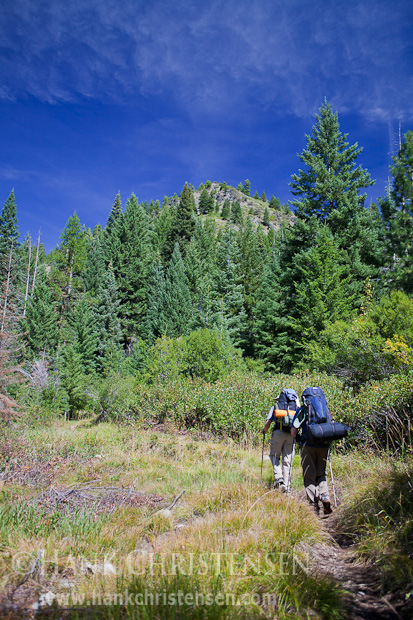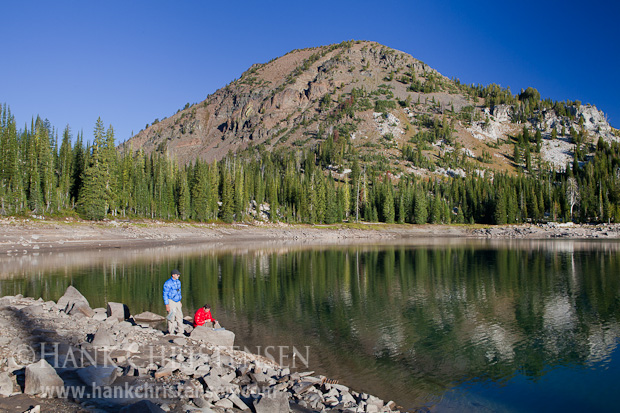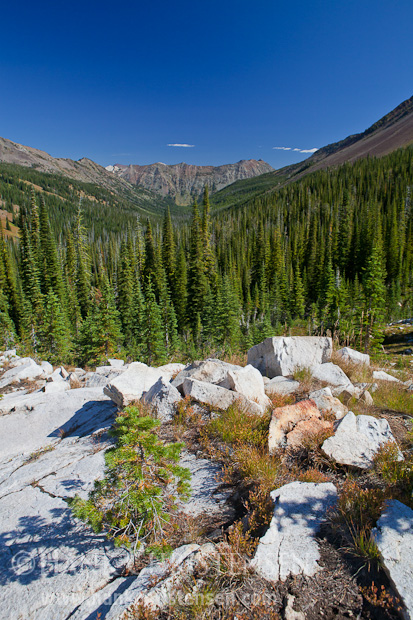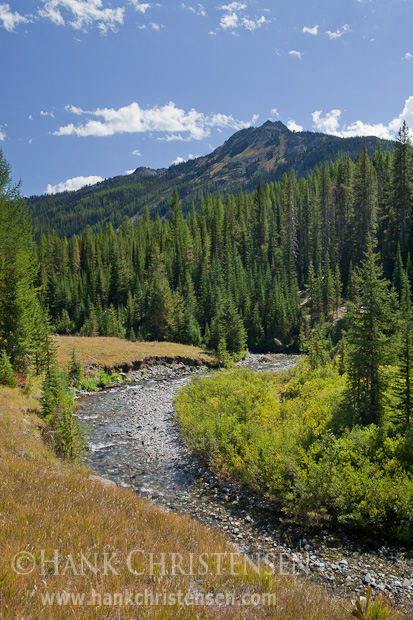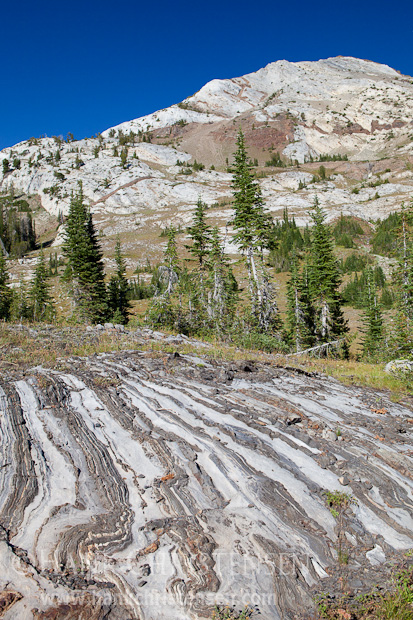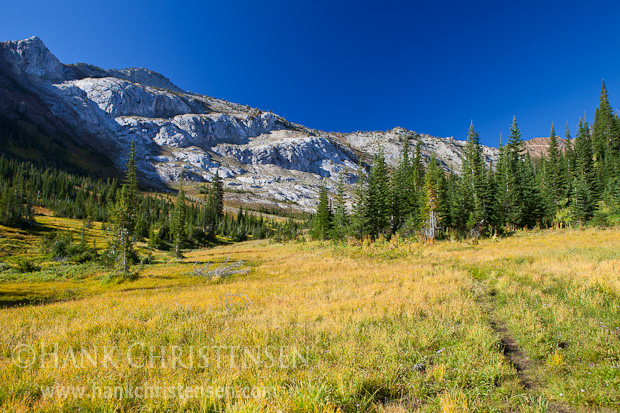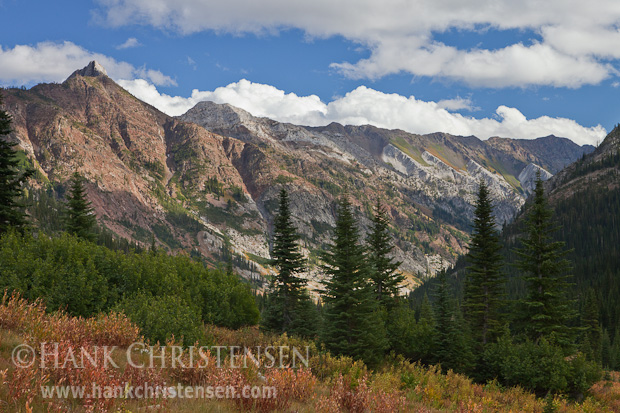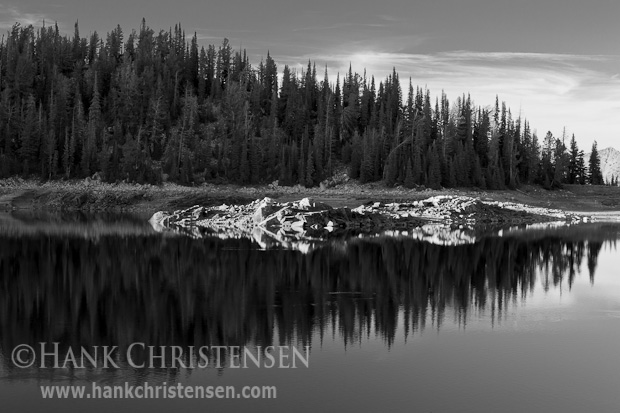This is a continuation of a recent backpacking trip to Oregon’s Eagle Cap Wilderness. If you missed it, check out the first part of the Eagle Cap journey here.
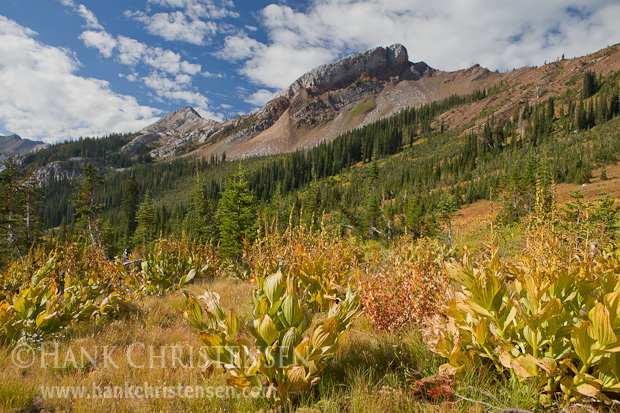
Our third day on the trail started in one of the most beautiful valleys I have ever seen. The closer we hiked to Hawkins Pass and the headwaters of the Imnaha River, the more spectacular the scenery became. The trail from our river-side camp site all the way to the pass gave us varied views of Jackson Peak to the west.
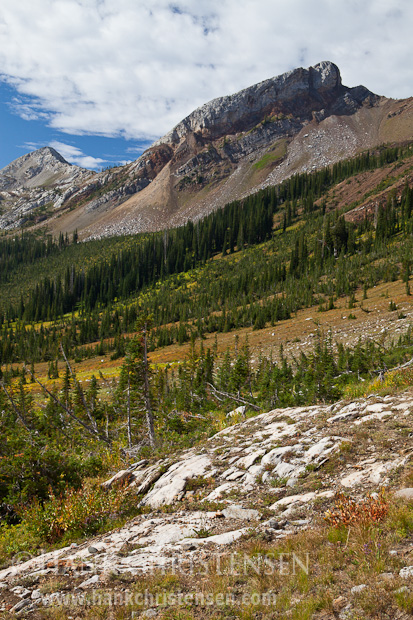
The bright yellows and oranges of the sun-baked meadows gave way to light and dark bands of green, with gray cliffs towering above. Just below Jackson Peak was a tree-less avalanche field, adding variety to the features of the landscape. Sunlight played through the fast-moving clouds, drawing shadows across the scene. Every moment brought a new mood and a changing picture.
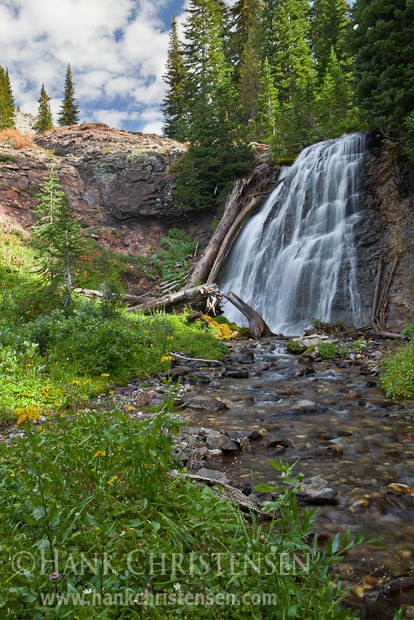
Just when I thought we had seen all this valley had to offer, the land rose abruptly, turning the gentle Imnaha River into a beautiful waterfall. A short hike from the trail to the bottom of the falls was well worth the effort.
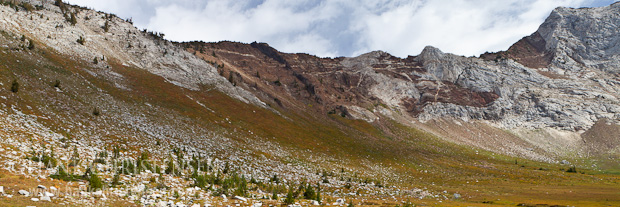
As the trail climbed in elevation, the valley opened up into a large bowl. Glacial snow melt cascaded down the sheer cliffs in tiny trickles, gathering the bowl to form the headwaters of the Imnaha. Darker gray and brown rock was banded throughout the limestone, forming a colorful tapestry of geological history. In this high mountain air, it was hard to imagine that this limestone was formed from the crushed bones of ancient sea creatures and coral. I tried to picture looking out upon vast coral reefs teaming with fish.
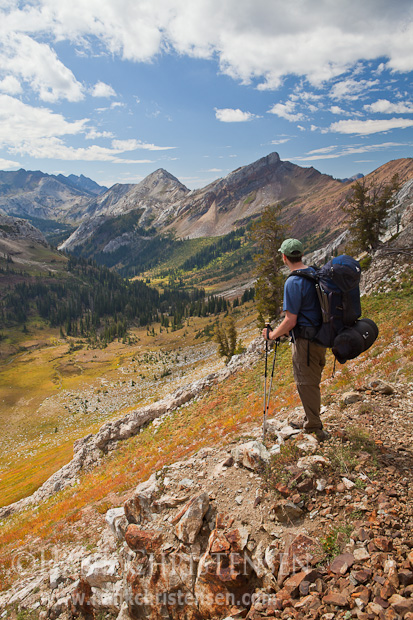
The trail continued upward toward Hawkins pass, switch-backing up a steep slope. This offered us expansive views of the valley we had hiked up that morning. Here is my brother once again volunteering to be my backcountry adventure model. I’d like to think he enjoyed the view as much as I enjoyed capturing him in it. This image is truly a kaleidoscope of nature, with oranges, yellows, many shades of green, all fading into the light blue of the distant mountains and sky.
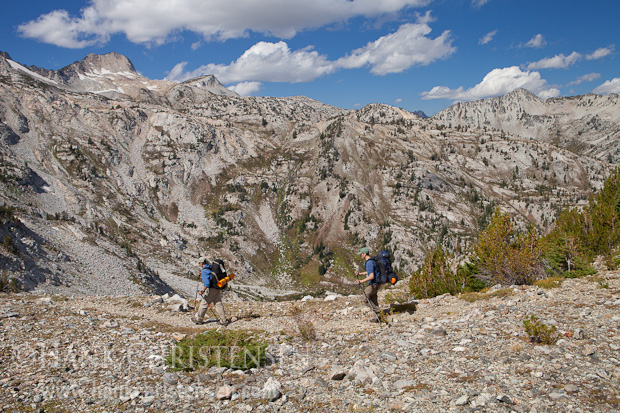
After a quick break at the top of Hawkins pass, we were ready to descend into the popular Lakes Basin. Here we met our first people of the trip – an indication that we were entering a very popular area. In fact, from this point on, the trail got much busier (that is until we left the Lakes Basin area the following day!) The view from the pass was mostly rocky steep talus slopes. In the photo above, the wilderness’ namesake, Eagle Cap, can be seen peeking over the horizon, in the center-left.
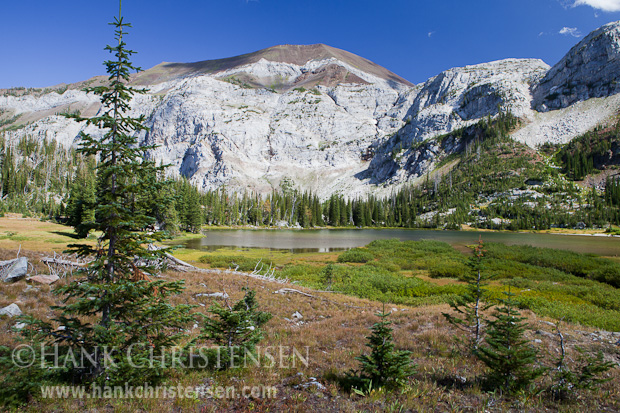
The trail dropped to Frazier Lake, a popular spot to stop for lunch and a quick dip in the water. Once again, white limestone cliffs made an appearance. Here, a trail splits off to Wallowa Lake, following the west fork of the Wallowa River, but we turned left and started climbing again. After a short climb up a narrow valley, we arrived at Glacier Lake, our destination for the night.
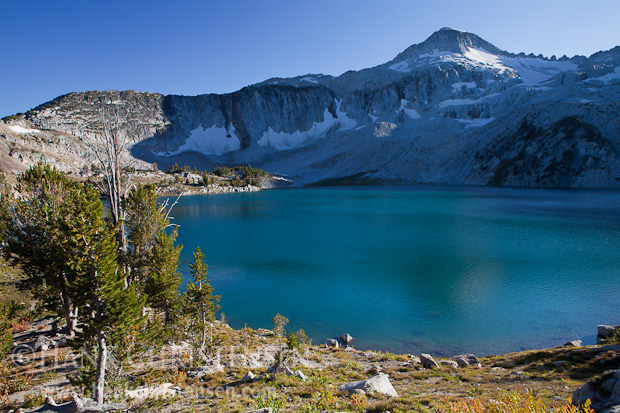
Due to their overuse, at all lakes in the Lakes Basin area, it is against regulations to have a campfire. I don’t know why, but when I’m in these regulated areas, mother nature seems to spite me with some very cold nights. As the sun set over the horizon and the wind picked up, I knew we’d be in for a doozy. Staring across the lake at the glaciers clinging to the slopes of the cliff face, I could see where this lake got its name. In fact, this lake is only ice free for two months of the year. After that long night on the lake, I wasn’t surprised a bit.
To see more, be sure to check out the third part conclusion of this trip.

